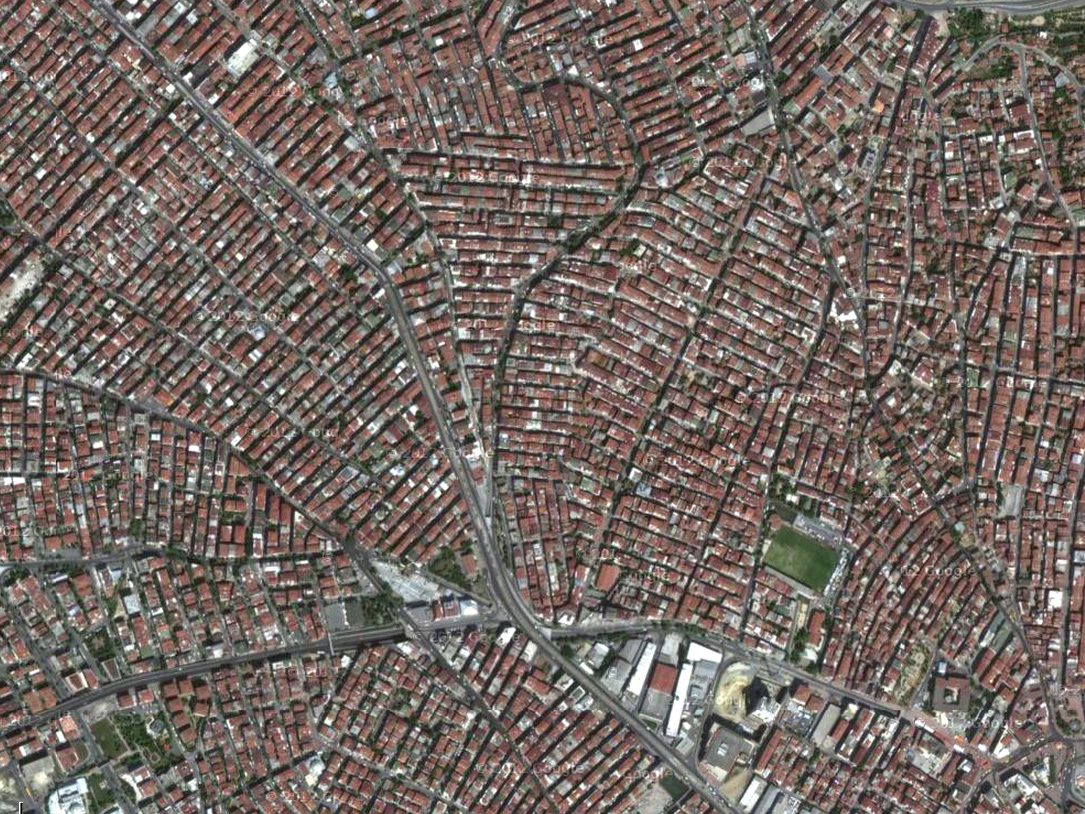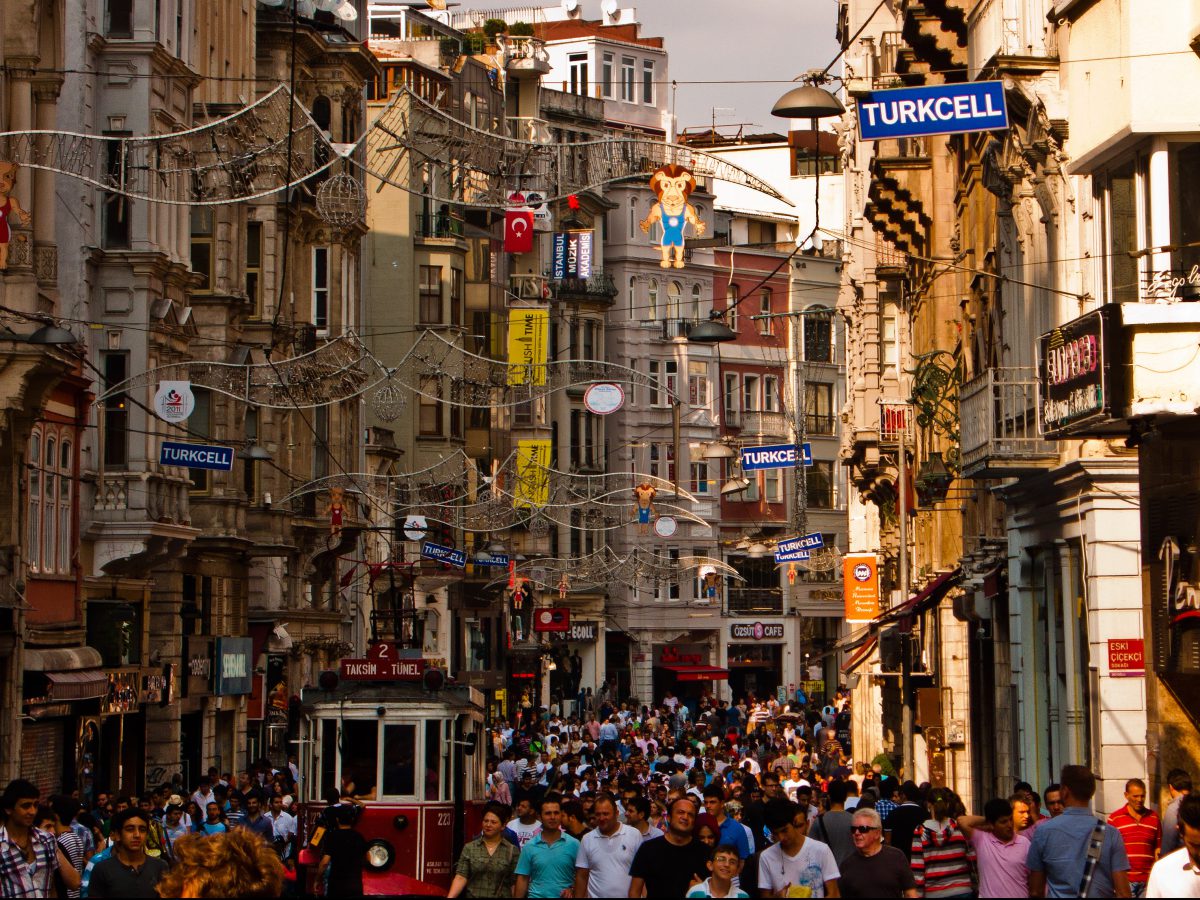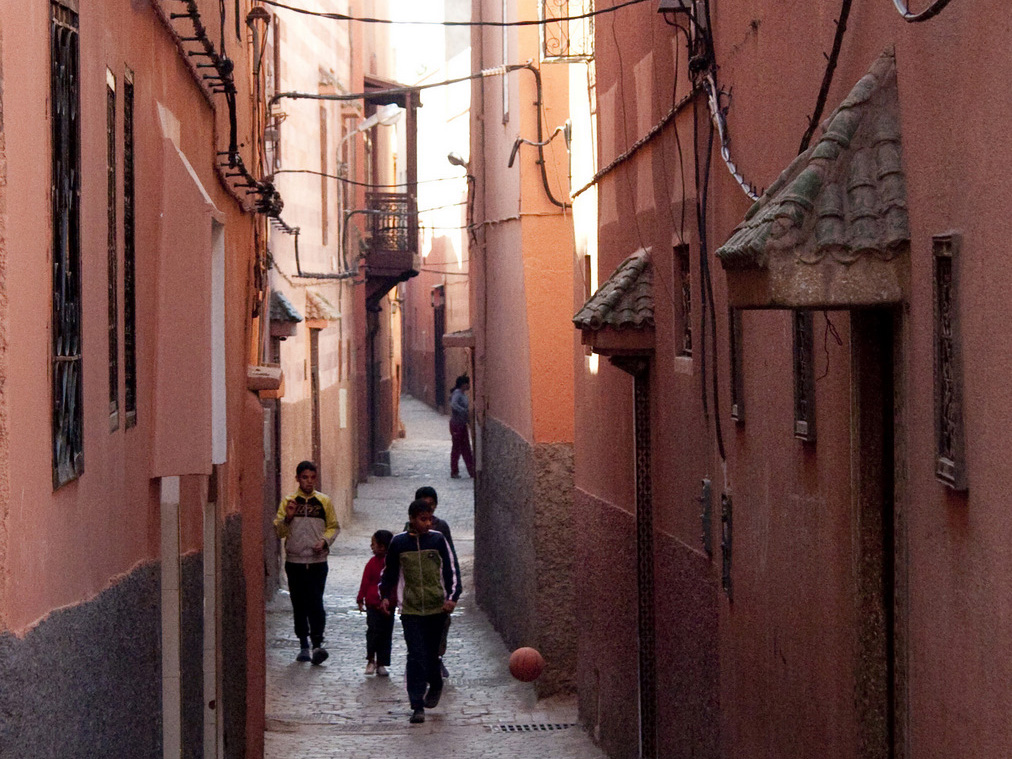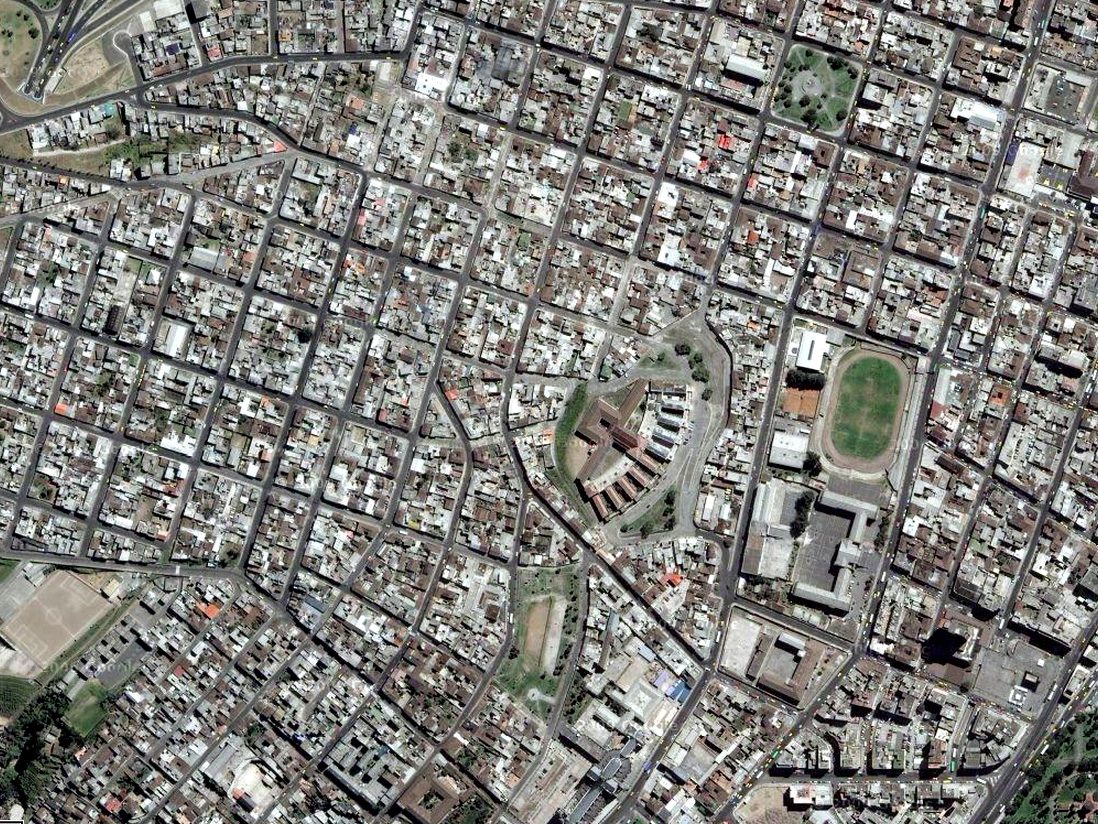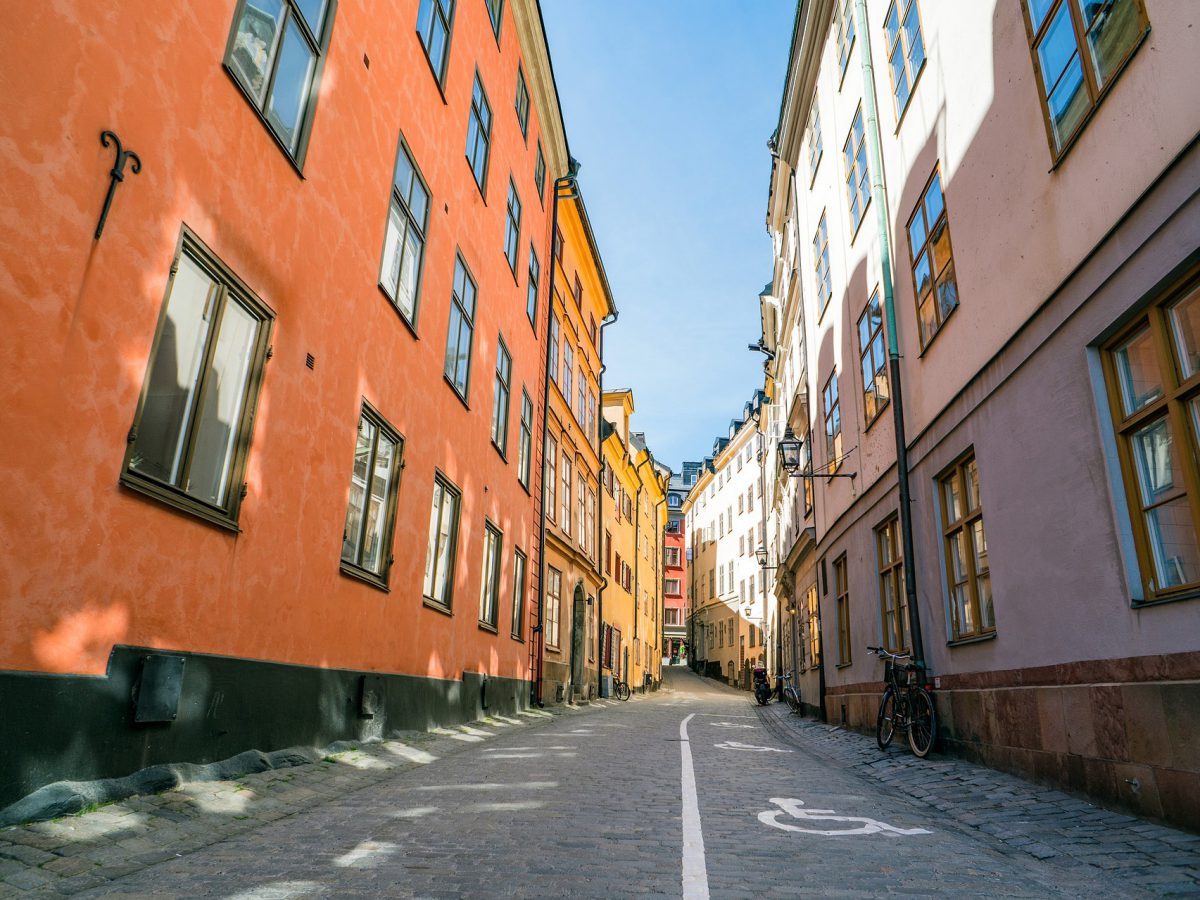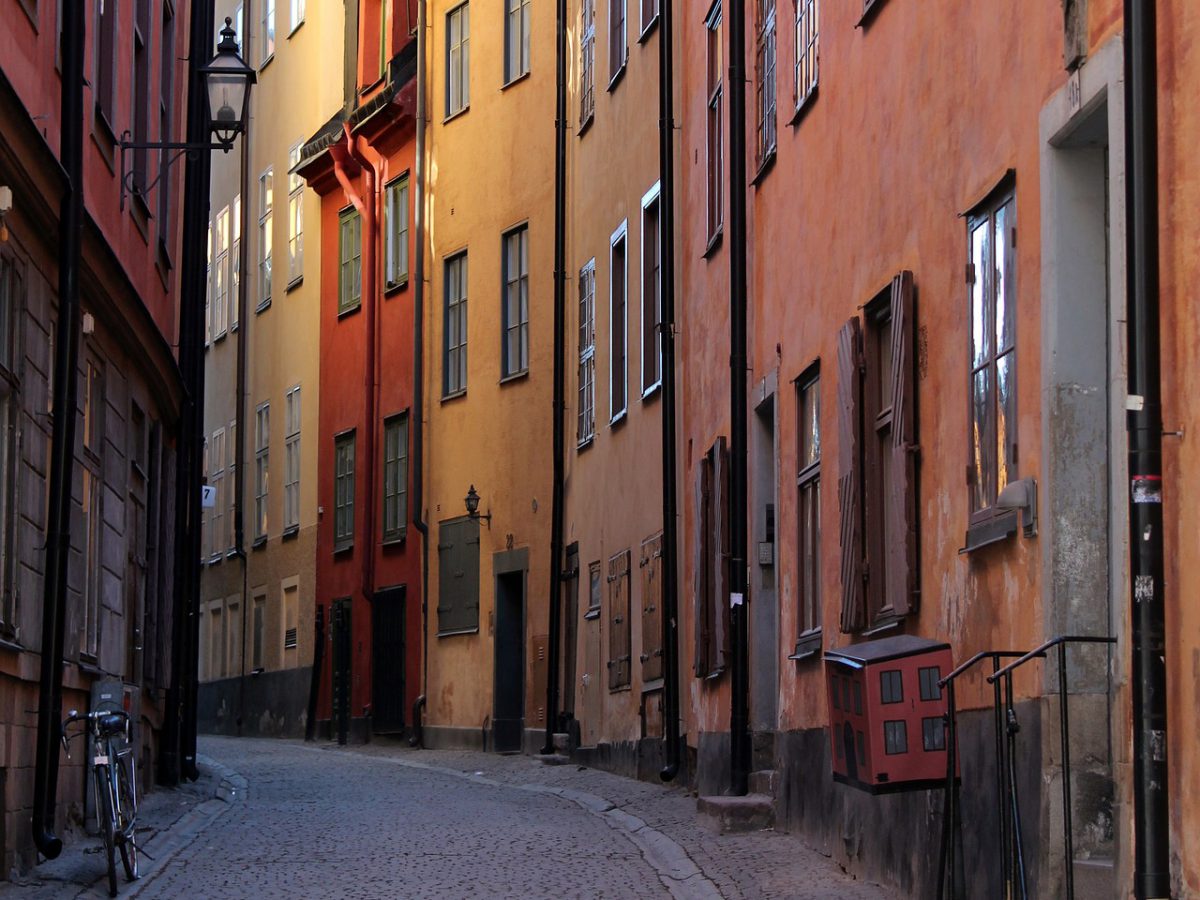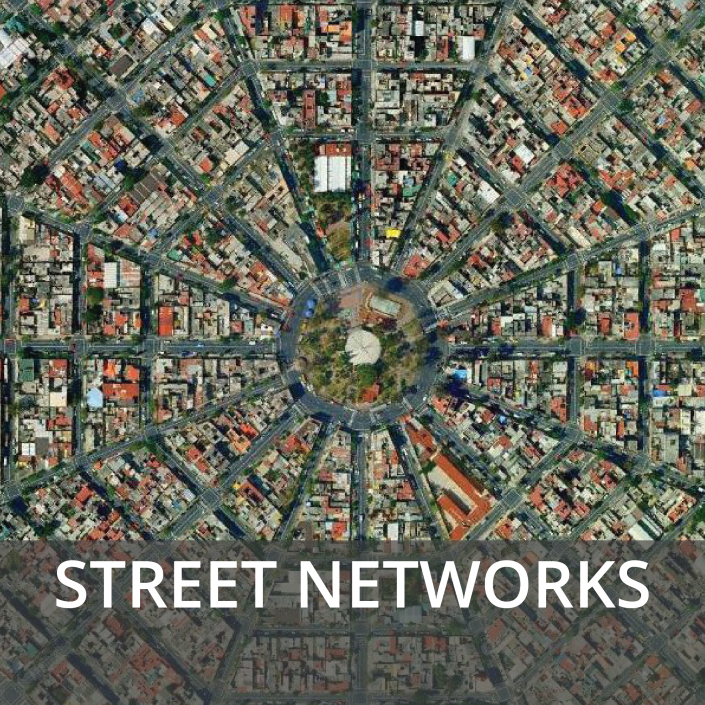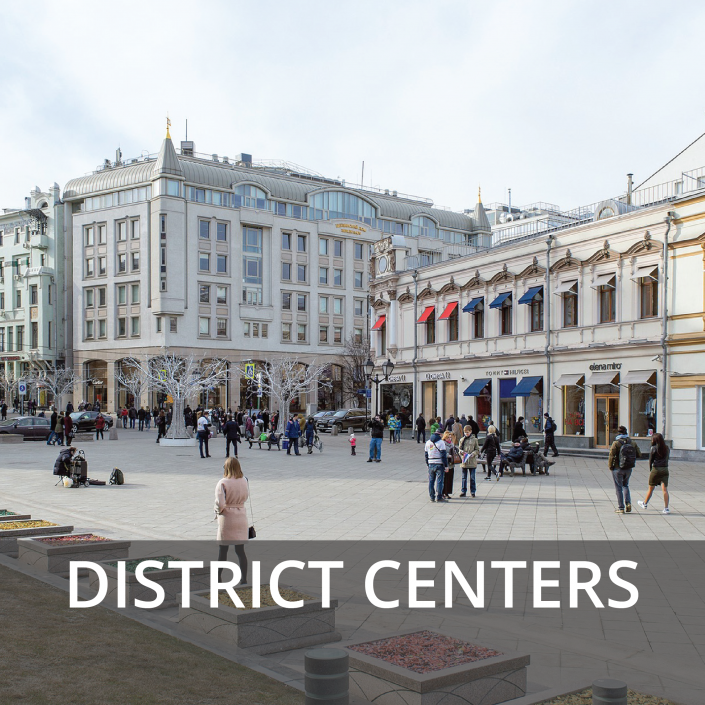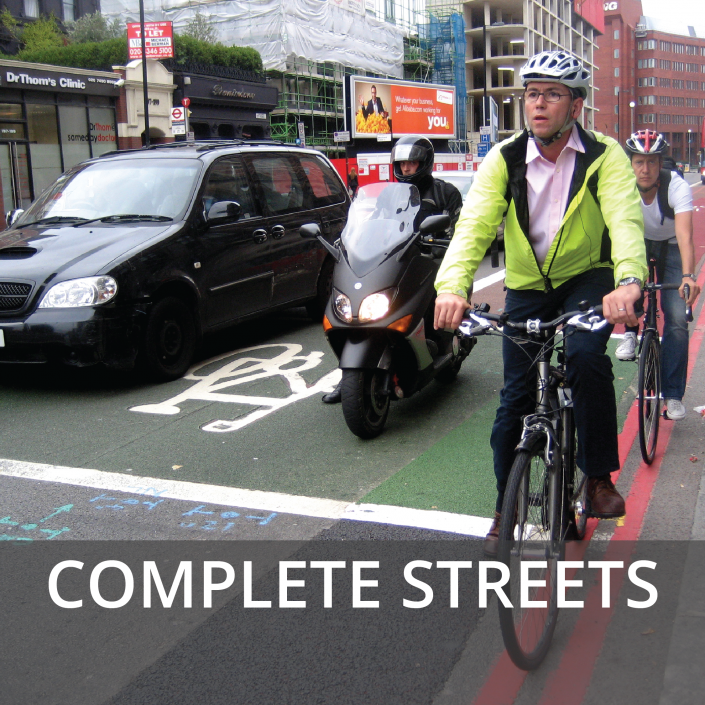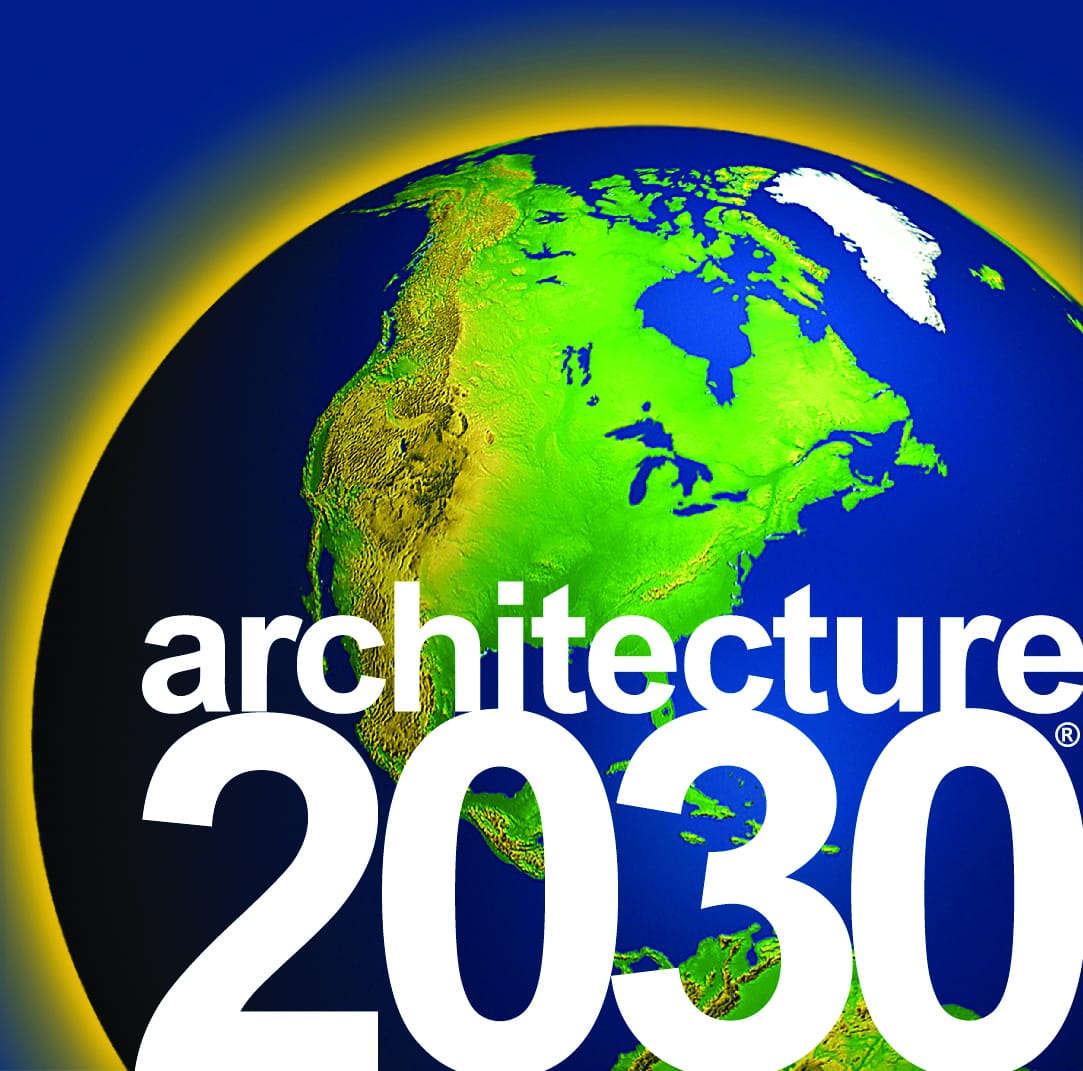Street patterns influence the microclimate around buildings and affect access to light, sun and wind.
The layout of streets in a dense urban core, their width and orientation, greatly determines building solar and ventilation utilization potential, as well as pedestrian comfort at street level.
Guidelines for various climates:
- Cold – orient elongated streets +/-20 degrees E/W; space streets for solar access.
- Temperate-humid – orient elongated streets +/-25 degrees E/W; orient streets oblique to summer winds +/-25 degrees.
- Temperate-dry – orient elongated streets +/-25 degrees E/W; narrow N/S streets.
- Hot-dry – orient elongated streets N/S; narrow streets for shade.
- Hot-humid – wide streets +/-25 degrees oblique to prevailing winds.
In hot climates or hot summers, shade streets and pedestrian pathways with colonnades, canopies and trees. In wet climates, protect pedestrian pathways with colonnades, canopies and building elements.

